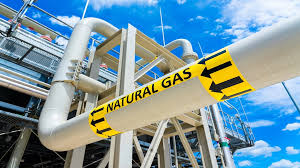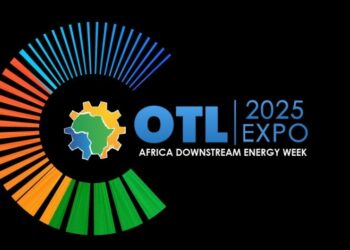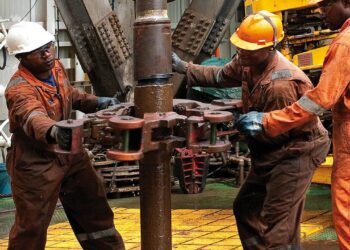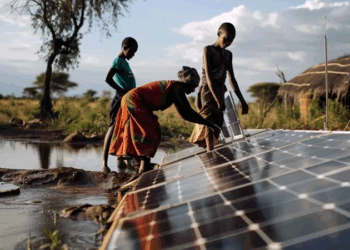At a recent public function the Nigerian Liquified Natural Gas, NLNG Limited, identified poor infrastructure spread as limiting gas expansion drive in Nigeria.
The company therefore stressed the need for the federal government to vigorously pursue the Decade of Gas agenda and facilitate and enabling environment to drive the required investment on about $20billion needed to bridge the gas infrastructure gap in the country.
The managing director and chief executive officer, NLNG, Philip Mshelbila, at the just concluded Nigeria International Energy Summit (NIES), in Abuja, called for deliberate efforts in moving the needle on the Decade of Gas programme by the federal government.
He stated that the federal government had estimated that a yearly investment of $20billion is required to bridge the gas infrastructure gap in Nigeria in the next 10 years.
Mshelbila, represented by the company’s deputy managing director, Mr. Olakunle Osobu, stated that the Petroleum Industry Act (PIA) has the potential to reshape both the industry landscape and address deficiencies in the country’s gas infrastructure.
He said that Africa would require substantial investments to increase gas production and ensure the supply of significant volumes of natural gas to the world market in the future, adding that Nigeria, must take essential steps to attract the necessary investment for enhancing the gas industry from exploration to production.
Also, the company’s general manager, Finance, Mrs Fatima Adanan, has called for increased consumer awareness, especially in rural areas, on the use of Liquefied Petroleum Gas (LPG) to drive up utilisation and reduce associated risks from using biomass for cooking.
Adanan underscored the need for a campaign that aims to transition biomass users to LPG for cooking in the market. She said the goal is to increase LPG usage in Nigeria, thereby altering the current energy mix and achieving deeper penetration of LPG.
She stated that the total market consumption in Nigeria is about 1.5 million metric tons with potential to increase exponentially.
She further added that NLNG was doing everything within its power to make the product available and affordable, selling the LPG at a competitive price with payments made in Naira.
In general, Nigeria’s infrastructure deficit, amounting to 30 per cent of its gross domestic product (GDP), falls short of the international benchmark of 70 per cent set by the World Bank, according to the International Trade Office of the US Department of Commerce.
With Nigeria’s population growing at a rate of over 2.5 per cent per year and an expected population of 400 million people by 2050, the US agency worries that the current infrastructure in the country is likely to be overwhelmed. The World Bank has projected that Nigeria will need to invest $3 trillion to reduce its infrastructure deficit.
Though Nigeria is working to address its gas infrastructure deficit through a number of initiatives, including the Decade of Gas Initiative, the Petroleum Industry Act, and investments in infrastructure.
The Decade of Gas Initiative aims to increase gas use in transportation, cooking, and power generation and also seeks to increase gas exports to generate revenue and will run from 2021 to 2030
The Petroleum Industry Act (PIA) of 2021 is intended to restructure the petroleum industry and address the gas infrastructure gap
The Nigerian National Petroleum Company Limited (NNPC Ltd) is also leading efforts to build infrastructure to deliver gas to power plants and industries
The government is also investing in methane abatement technologies to reduce emissions
However, Nigeria needs innovative financing solutions to close its infrastructure gap and potential sources of financing include pension funds, investment corporations, and sovereign wealth funds
These efforts are challenged by expanding gas infrastructure risks methane emissions from leaks and other sources and private investors are skeptical of partnering with the government
What NLNG Initiative Aspires To Achieve
The Nigerian Liquified Natural Gas (NLNG) is harnessing energy that will lead to enhanced emissions reduction.
The company said that Africa seeks to harness its vast energy potential to drive economic growth and industrial evolution, it will take productive steps and mobilise resources towards reducing carbon emissions to meet evolving market expectations.
Delivering the keynote address during a panel session at the 8th Nigeria International Energy Summit (NIES), titled: “LNG and Domestic Gas Solutions: Paving the path for Africa’s Energy and Industrial Evolution,” Olakunle Osobu, Deputy Managing Director of NLNG, stated that NLNG’s multifaceted strategy for energy transition included incorporating Carbon Capture and Storage (CCS) technologies, harnessing renewables, implementing a comprehensive Greenhouse Gas and Energy Management Plan, and modernising its LNG carrier fleet to enhance fuel efficiency and reduce carbon emissions.
He disclosed that NLNG has embarked on a fleet renewal initiative, as part of its commitment to operational efficiency, incorporating modern LNG carriers such as the Company’s chartered vessels, LNG AKTORAS and LNG AXIOS II.
These state-of-the-art vessels replaced older steam-powered ships, significantly reducing carbon emissions, enhancing fuel efficiency, and reinforcing NLNG’s leadership in value-chain decarbonisation.
Osobu emphasised the need for innovative strategies to overcome challenges and unlock opportunities in Africa’s energy sector, pointing at liquefied natural gas (LNG) and domestic gas solutions as enablers of Africa’s energy transformation. With the completion of Train 7, he said NLNG was already considering the development of an eighth train to further solidify its position as a top global LNG producer.
Highlighting innovative financing models, Osobu advocated for blended financing through public-private partnerships (PPPs), sovereign wealth funds, and development finance institutions like the World Bank, IFC, and Afreximbank. He also underlined the importance of green and transition bonds in funding low-carbon LNG projects and efficiency upgrades.
Speaking on key bottlenecks hindering Africa’s energy and industrial growth, Osobu called for attention of stakeholders in the industry to address the underutilisation of existing LNG capacity, security concerns, upstream gas supply disruptions, regulatory uncertainties, and inadequate local infrastructure. He also called for policy reforms, increased technological investments, and improved security frameworks to attract global investors and accelerate energy transformation.
He stated that despite challenges, particularly in gas supply, NLNG remained committed to maintaining Africa’s competitive footprint in the global gas trade and continues to invest in sustainable solutions that support Nigeria’s energy security and economic growth.
Obviously, Africa’s energy sector presents significant opportunities for investment and growth through targeted infrastructure development.
Despite the continent’s abundant hydrocarbon resources, inadequate infrastructure has historically impeded efficient extraction, processing and distribution.
Addressing these gaps can unlock substantial economic potential and meet the rising energy demands both within Africa and globally.
As Africa continues to prioritise energy infrastructure development, this year’s Africa Energy Week (AEW): Invest in African Energies conference – taking place September 29 to October 3 in Cape Town – will serve as a critical platform for investors, policymakers and industry leaders to explore opportunities in oil and gas pipelines, storage facilities and gas-to-power projects.
Discussions at AEW 2025 will highlight successful infrastructure projects, showcase emerging investment prospects and address challenges in financing and implementation.
Pipeline Infrastructure Development
One critical area for investment is the development of extensive pipeline networks.
These pipelines are essential for transporting crude oil and natural gas from production sites to refineries and export terminals.
The proposed Nigeria-Morocco Gas Pipeline aims to transport approximately 30 billion cubic meters of natural gas annually from Nigeria through to Morocco and onto Europe, traversing 13 African countries.
The $25 billion, 5,600-km project is poised to enhance energy security and foster economic integration across the region, with the potential to create jobs, boost industrialisation and provide a stable gas supply for domestic consumption and export, strengthening Africa’s role in the global energy market.
Liquefied Natural Gas Facilities
Investing in Liquefied Natural Gas (LNG) facilities is another promising avenue. These facilities enable the processing and export of natural gas, catering to global markets with high energy demands. Countries like Mozambique, the Republic of Congo, Nigeria and Tanzania are advancing large-scale LNG projects to capitalise on their substantial gas reserves. For example, Tanzania’s LNG Liquefaction Plant, estimated at $30 billion, is set to position the country as a key player in the global LNG market.





